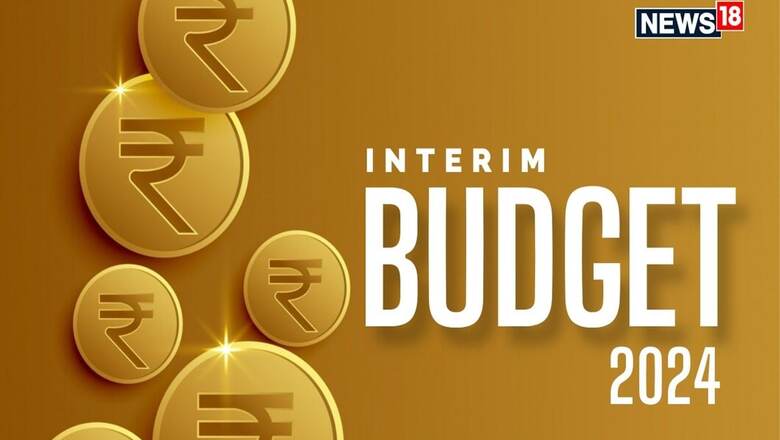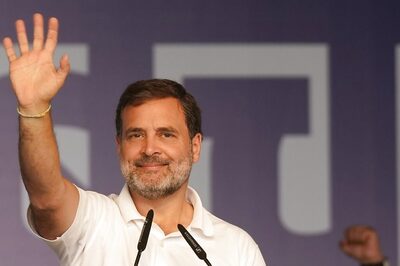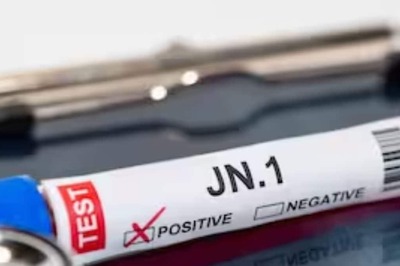
views
As India’s growth story transcends into yet another financial year, Finance Minister Nirmala Sitharaman presented her 6th budget on February 1, 2024. With its theme revolving around contrasting India’s economic state in 2024 with what it was in 2013-14, this interim budget is clearly an election budget. This is also corroborated by its short 57-minute duration, as the government is prepared to present a new one in July after a hopeful win in the May 2024 polls.
The finance minister’s budget speech primarily highlighted a revised estimate of the fiscal deficit target at 5.1 per cent and improved macroeconomic metrics over the last 10 years, while giving a sneak peek into the government’s vision of the next 10 years.
FM Sitharaman started her speech in Parliament with a roadmap to create Viksit Bharat by 2047 and the Modi government’s Governance, Development and Performance (GDP) approach to maintain a healthy inflation metric. The budget emphasised heavily on green energy, tech, railways, infrastructure, and tourism. Sitharaman announced three major economic railway corridor programs for energy, mineral and cement along with the conversion of 40,000 rail bogies to Vande Bharat standards. Proposals to enhance connectivity by building ports for the propagation of tourism in Lakshadweep were also introduced. The infrastructure sector enjoyed an allocation raise for FY 2024-25 to 11.1 trillion rupees.
While there was no mention of privatisation, disinvestment, and asset monetisation, the budget focused on creating an ecosystem for private investment to pick up, highlighting the government’s intention to empower, equip and enable the private sector. Echoing the emotion of PM Modi’s ‘Jai Anusadhan’, a corpus of 1 lakh crore was announced to provide nil and low-rate interest refinancing loans for up to 50 years to upskill the youth to contribute to the growth of the private sector and encourage innovation in the sunrise tech sector in India.
It can be touted as a stable budget as the government stayed away from announcing any major transformational policies or populist measures and maintained the status quo with taxes and duties. It is expected to enhance predictability for not just domestic but also international investors, enabling the Ease of Doing Business.
The finance minister also stated the government’s intent on promoting foreign investment by introducing the government’s plan of FDI for FDI – Foreign Direct Investment for First Developed India. She proclaimed the period between 2014 to 2024 as the “Golden Era” in which FDI doubled from the foreign investment inflow from 2005-2014. There was a special mention of India’s role in the changing world order with the upcoming India-Europe-Middle East corridor.
Micro Small Medium Enterprises (MSMEs) were, however, at the receiving end with the budget falling short of the industry’s hopes of transformative reforms to catalyse their growth. The budget also lacked measures for job creation in the country. While the measures to withdraw outstanding disputed tax demands for specific periods are expected to benefit 10 million taxpayers, the large middle class is resenting no alteration to the existing tax slabs.
Green Energy was the centre of attention with the government’s focus on promoting climate resilience. The finance minister announced a solar rooftop scheme and a heavy investment in Electric Vehicles companies. The budget’s effect can already be witnessed by a major surge in stock prices of EV companies. This emphasis on environmental protection is consistent with the government’s allocation of Rs 98,418 crore for the Jal Jeevan Mission to promote Blue Economy 2.0.
Sitharaman also spoke about India’s progress in three sectors – aviation, housing, and defence during the tenure of the Modi government and laid out the government’s future vision for each of these. Announcements were made about new schemes for strengthening deep-tech technologies in defence, fulfilling housing needs of the deserving middle class, and developing new airports in tier-two and tier-three cities.
With an aim to bring the fiscal deficit below 4.5 per cent by 2026, the government signalled its continued fiscal responsibility in the hope of coming to power after the upcoming elections. They also highlighted their intent to work closely with state governments in future by announcing Rs 75,000 crore for milestone-linked reforms by state governments. With the Centre’s dual emphasis on constituting a high-power committee to overcome the challenges of fast population growth and extending the Ayushman Bharat Scheme to provide HPV vaccine for Anganwadi workers, it is safe to say, it was a finance budget with a tangential focus on demographic and social outlook, as is expected of an election propaganda.
In conclusion, the absence of populist policies from the budget speech is indicative of the government’s confidence of being able to present a budget in July. This interim budget is a report card of Modi’s tenure and his vision for the next decade of New India with a special focus on GYAN – Gareeb (Poor), Youth, Annadata (Farmer) and Nari (Woman).
Rajesh Mehta is a leading international consultant in the field of Market Entry, Innovation, and Public Policy; Tanya Nagpal is an independent researcher. Views expressed in the above piece are personal and solely those of the author. They do not necessarily reflect News18’s views.




















Comments
0 comment